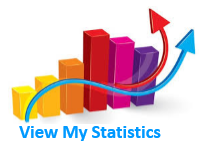Big data analytics in the public sector: A systematic literature review
DOI:
https://doi.org/10.18196/jai.v26i2.25661Keywords:
Big Data Analytics, Public Sector, Literature ReviewAbstract
Research aims: This study presents a systematic literature review of empirical research on Big Data Analytics (BDA) in the public sector. The purpose is to examine how BDA has been applied, the research settings, dominant themes, and the lessons learned across the literature.
Design/Methodology/Approach: Using a review method adapted from Hoque (2014), the study analyzed 64 articles published between 2015 and 2023 sourced from the Scopus database. Articles were selected based on relevance, journal quality, accessibility, and methodological rigor.
Research findings: The review identified six key thematic areas in public sector BDA research: accountability, energy efficiency, sustainability, innovation, analytics, and governance. The dominant theories found include Big Data Theory, Stakeholder Theory, and Agency Theory, while archival and survey methods were the most commonly employed research approaches. The United Kingdom, United States, and international multi-country studies contributed the most publications.
Theoretical contribution/ Originality: The novelty of this study lies in its exclusive focus on the public sector, its integrative thematic analysis using co-word mapping, and its implications for academic theory building, practical implementation, and policy formulation in public administration.
Practitioner/Policy implication: This study can be used these insights to develop effective BDA strategies, enhance performance, and foster trust in public institutions through more responsive and evidence-based decision-making.
Research limitation/Implication: Future research is expected to further study and research: (1) The Impact of Big Data on the Public Sector using journals or other references outside the Scopus database; (2) Future research can use keywords that are different from this research, (3) and can also access more journals to be reviewed.
References
Antony, J., & Sony, M. (2020). An empirical study into the limitations and emerging trends of Six Sigma in manufacturing and service organisations. International Journal of Quality & Reliability Management, 37(3), 470-493. https://doi.org/10.1108/IJQRM-07-2019-0230
Aoki, G., Ataka, K., Doi, T., & Tsubouchi, K. (2023). Data-driven estimation of economic indicators with search big data in discontinuous situation. The Journal of Finance and Data Science, 9, 100-106. https://doi.org/10.1016/j.jfds.2023.100106
Belias, D., Malik, S., Rossidis, I., & Mantas, C. (2021). The use of big data in tourism: current trends and directions for future research. Academic Journal of Interdisciplinary Studies, 10(5), 357-364. https://doi.org/10.36941/ajis-2021-0144
Bortoló, G. M., Valdés, J. Á., & Nicolas-Sans, R. (2023). Sustainable, technological, and innovative challenges post Covid-19 in health, economy, and education sectors. Technological Forecasting and Social Change, 190, 122424. https://doi.org/10.1016/j.techfore.2023.122424
Carrillo Sánchez, L., García Calderón, C., Cuevas Contreras, T., & Ruiz León, A. (2020). Big data in the Mexico City brand in the context of audience fragmentation. Investigaciones Turísticas (20), 124-142. https://doi.org/10.14198/INTURI2020.20.06
Chen, H., Chiang, R. H., & Storey, V. C. (2015). Business Intelligence and Analytics: From Big Data to Big Impact. MIS Quarterly, 36(4), 1165-1188. https://doi.org/10.2307/41703503
De Mauro, A., Greco, M., & Grimaldi, M. (2016). A formal definition of Big Data based on its essential features. Library Review, 65(3), 122–135. https://doi.org/10.1108/LR-06-2015-0061
Deepica, S., Kalavathi, S., Angelin Blessy, J., & Maria Manuel Vianny, D. (2022). Machine Learning Based Approach for Energy Management in the Smart City Revolution. Hybrid Intelligent Approaches for Smart Energy: Practical Applications, 161-179. https://doi.org/10.1002/9781119821878.ch9
Dekimpe, M. G. (2020). Retailing and retailing research in the age of big data analytics. International Journal of Research in Marketing, 37(1), 3-14. https://doi.org/10.1016/j.ijresmar.2019.09.001
Fisch, C. and Block, J. (2018), “Six tips for your (systematic) literature review in business and management research”, Management Review Quarterly, Vol. 68 No. 2, pp. 103-106. https://doi.org/10.1007/s11301-018-0142-x
Gandomi, A., & Haider, M. (2015). Beyond the hype: Big data concepts, methods, and analytics. International Journal of Information Management, 35(2), 137–144. https://doi.org/10.1016/j.ijinfomgt.2014.10.007
George, B., Van de Walle, S., & Hammerschmid, G. (2019). Institutions or contingencies? A cross‐country analysis of management tool use by public sector executives. Public Administration Review, 79(3), 330-342. https://doi.org/10.1111/puar.13018
Gunawan, H., Wulandari, D., & Putri, A. (2023). Big data in Indonesian public service transformation: Opportunities and barriers. Jurnal Administrasi Publik Digital, 2(1), 55–68.
Hoque, Z. (2014), “20 Years of studies on the balanced scorecard: trends, accomplishments, gaps and opportunities for future research”, The British Accounting Review, Vol. 46 No. 1, pp. 33-59. https://doi.org/10.1016/j.bar.2013.10.003
Huy, P. Q., & Phuc, V. K. (2023). Acquiring Sustainability in The Prospect of Digital Transformation Through Global Brain-Reflective Accounting Practices Application. International Journal of Economics & Management, 17(2). https://doi.org/10.47836/ijeam.17.2.06
Janssen, M., et al. (2017). Big data for policy making: Challenges and opportunities. Government Information Quarterly, 34(1), 1–7. https://doi.org/10.1016/j.giq.2016.02.003
Kalema, B. M., & Mokgadi, M. (2017). Developing countries organizations’ readiness for Big Data analytics. Problems and perspectives in management (15, Iss. 1 (cont.)), 260-270. https://doi.org/10.21511/ppm.15(1-1).2017.13
Kettunen, P., Kallio, J., & Ropponen, J. (2022). Big data and accountability in digital government. Information Polity, 27(1), 3–15.
Khoirul Aswar, E. a. W. J. (2021). Implementation of accrual accounting by the Indonesian central government: An investigation of social factors. Public and Municipal Finance, 10(1), 151-163. https://doi.org/10.21511/pmf.10(1).2021.12
Lavertu, S. (2016). We all need help:“Big data” and the mismeasure of public administration. Public Administration Review, 76(6), 864-872. https://doi.org/10.1111/puar.12436
Lu, W., Chen, X., Ho, D. C., & Wang, H. (2016). Analysis of the construction waste management performance in Hong Kong: the public and private sectors compared using big data. Journal of Cleaner Production, 112, 521-531. https://doi.org/10.1016/j.jclepro.2015.06.106
Moerkerken, A., Duijndam, S., Blasch, J., van Beukering, P., & Smit, A. (2021). Determinants of energy efficiency in the Dutch dairy sector: dilemmas for sustainability. Journal of Cleaner Production, 293, 126095. https://doi.org/10.1016/j.jclepro.2021.126095
Moro, M. A., McKnight, U. S., Smets, B. F., Min, Y., & Andersen, M. M. (2018). The industrial dynamics of water innovation: A comparison between China and Europe. International Journal of Innovation Studies, 2(1), 14-32. https://doi.org/10.1016/j.ijis.2018.03.001
Poje, T. and Zaman Groff, M. (2021), “Mapping ethics education in accounting research: a bibliometric analysis”, Journal of Business Ethics, pp. 1-22. https://doi.org/10.1007/s10551-021-04846-9
Pollock, N., & Williams, R. (2015). Industry analysts–how to conceptualise the distinctive new forms of IT market expertise? Accounting, Auditing & Accountability Journal, 28(8), 1373-1399. https://doi.org/10.1108/AAAJ-03-2015-1989
Popoola, O. M. J., & Mohd Jamel, N. E. S. (2020). Examining public acceptance choice causes on sales and service tax implementation in Malaysia. Problems and perspectives in management, 18(4), 228-246. https://doi.org/10.21511/ppm.18(4).2020.20
Power, D. J. (2014). Using Big Data for Analytics and Decision Support. Journal of Decision Systems, 23(2), 222-228. https://doi.org/10.1080/12460125.2014.888848
Pratama, A. B. (2019). The landscape of public service innovation in Indonesia: A comprehensive analysis of its characteristic and trend. Innovation & Management Review, 17(1), 25-40. https://doi.org/10.1108/INMR-11-2018-0080
Puspita, A.F., Lilik, P., and Rusydi, M.K. (2023), “The Role of Big Data in Building Smart City for Regional Taxation Systems”, Journal of Research and Applications: Accounting and Management, Vol. 6 No. 2. https://doi.org/10.33795/jraam.v6i2.004
Radicic, D., & Petković, S. (2023). Impact of digitalization on technological innovations in small and medium-sized enterprises (SMEs). Technological Forecasting and Social Change, 191, 122474. https://doi.org/10.1016/j.techfore.2023.122474
Rahmawati, E., Nazaruddin, I., Widiastuti, H., Sofyani, H., & Kholid, A. W. N. (2024). Environmental accounting in public sector: systematic literature review. Journal of Accounting and Investment, 25(1), 75–90. https://doi.org/10.18196/jai.v25i1.21344
Roy, J. (2016). Data, dialogue, and innovation: Opportunities and challenges for “Open Government” in Canada. Journal of Innovation Management, 4(1), 22-38. https://doi.org/10.24840/2183-0606_004.001_0004
Sait, M. A., & Ali, M. A. (2022). Assessing Brunei Darussalam Public and Private Sector Readiness Towards Big Data Application. International Journal of Asian Business and Information Management (IJABIM), 13(2), 1-22. https://doi.org/10.4018/IJABIM.20220701.oa7
Shah, N., Irani, Z., & Sharif, A. M. (2017). Big data in an HR context: Exploring organizational change readiness, employee attitudes and behaviors. Journal of Business Research, 70, 366-378. https://doi.org/10.1016/j.jbusres.2016.08.010
Tilba, A. (2022). Appearance or substance of Stewardship and ESG reporting? The challenges of translating ‘commitment’into tangible outcomes. Sustainability Accounting, Management and Policy Journal, 13(5), 1015-1032. https://doi.org/10.1108/SAMPJ-03-2021-0091
Wamba, S. F., Akter, S., Edwards, A., Chopin, G., & Gnanzou, D. (2015). How ‘big data’ can make big impact: Findings from a systematic review and a longitudinal case study. International Journal of Production Economics, 165, 234–246. https://doi.org/10.1016/j.ijpe.2014.12.031
Wang, H., & Wu, Z. (2016). Exploring the Use of Big Data Technology in Agriculture: A Systematic Review. IEEE Access, 2, 1497-1506.
Weerakkody, V., Kapoor, K., Balta, M. E., Irani, Z., & Dwivedi, Y. K. (2017). Factors influencing user acceptance of public sector big open data. Production planning & control, 28(11-12), 891-905. https://doi.org/10.1080/09537287.2017.1336802
Wilbert, J. K., Durst, S., Aisenberg Ferenhof, H., & Selig, P. M. (2018). Unlearning at the individual level: An exploratory case study in a high power distance country. Journal of Innovation Management, 6(3), 17-39. https://doi.org/10.24840/2183-0606_006-003_0003
Xiao, Y. and Watson, M. (2019), “Guidance on conducting a systematic literature review”, Journal of Planning Education and Research, Vol. 39 No. 1, pp. 93-112. https://doi.org/10.1177/0739456X17723971
Zhou, Y., & Yang, Y. (2021). Big data and citizen engagement in public service. Government Information Quarterly, 38(3), 101604.
Zikopoulos, P., Eaton, C., deRoos, D., Deutsch, T., & Lapis, G. (2017). Understanding Big Data: Analytics for Enterprise Class Hadoop and Streaming Data. McGraw-Hill Osborne Media.
Downloads
Published
How to Cite
Issue
Section
License
Copyright (c) 2025 Muhammad Choirul Huda, Bambang Jatmiko

This work is licensed under a Creative Commons Attribution-NonCommercial-NoDerivatives 4.0 International License.
License
 Journal of Accounting and Investment is licensed under Creative Commons Attribution Attribution-NonCommercial-NoDerivatives 4.0 International License.
Journal of Accounting and Investment is licensed under Creative Commons Attribution Attribution-NonCommercial-NoDerivatives 4.0 International License.




